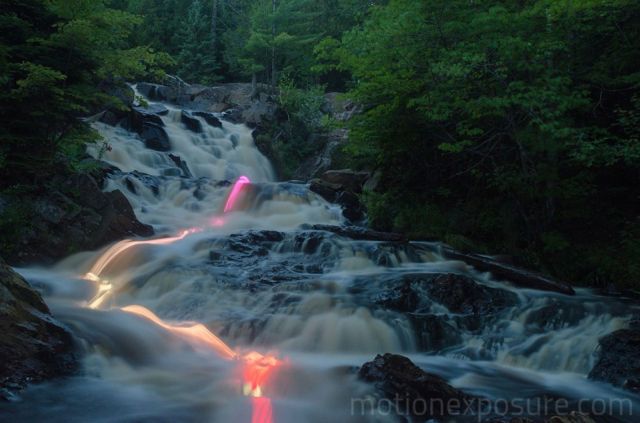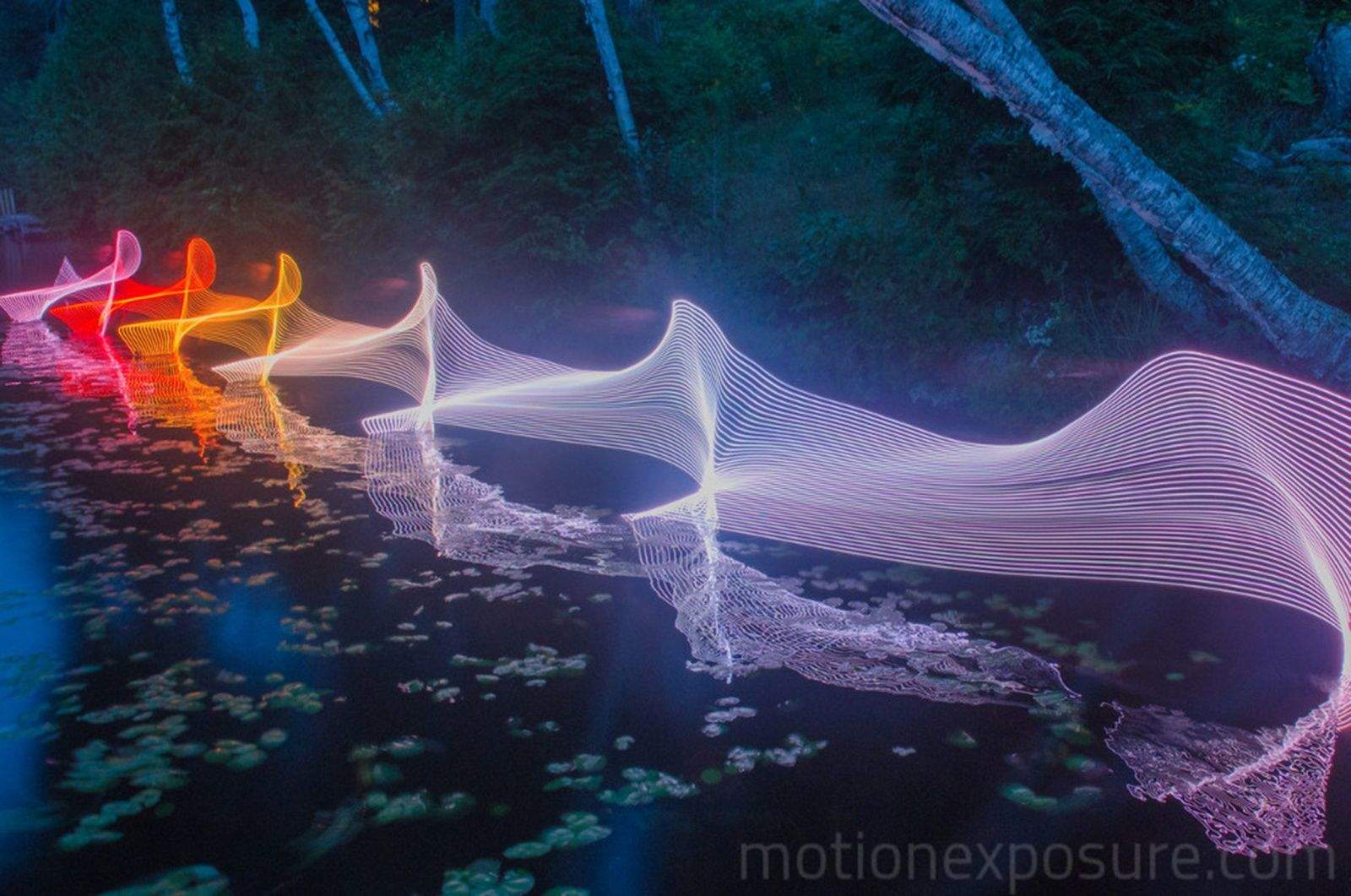Just when you think there is little left to reveal with photography, Stephen Orlando comes along and shines a new light – ribbons of light to be exact – on motion.
To imagine the push-and-pull sweep of a kayak stroke or the looping follow-thru of a tennis serve, you might think to use video and slow down the sequence of frames to get a sense of the patterns of movement bodies use to propel forward.
Orlando, of Waterloo, Ontario, Canada, contains the complete trajectory of movement in a single still frame with long exposures and a simple lighting technique that seems to illuminate the otherwise invisible forces at play.
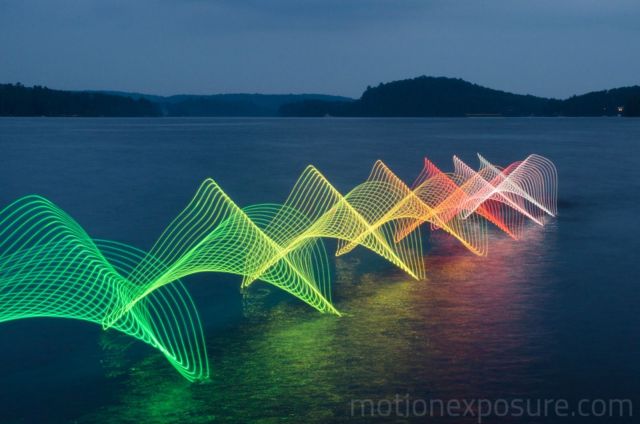
He attaches programmable LED light strips to objects, like a kayak paddle, or to the clothing and limbs of a moving body to reveal repetitive patterns of light.
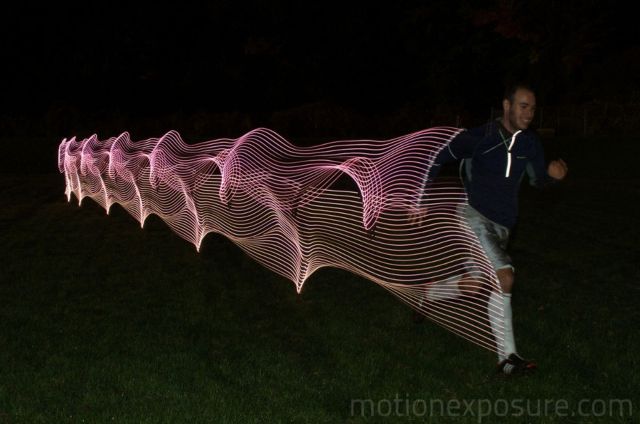
Long-exposure photography has long been a popular technique to capture motion blur of clouds and water or the trail of light at night caused by car lights, fireworks, even the trail of stars from our orbiting planet. It is fun to set your camera on bulb in the dark and paint with a gelled flash light.
One of the more popular sites to study long-exposure photography is bulbexposures.com.
Orlando’s interests, however, don’t start with the camera.
“My background is engineering, specifically aerodynamics,” Orlando told Cult of Mac. “I have spent several years analyzing and measuring fluid flow using various techniques.”
Those techniques involved high-speed technical photography he learned during graduate school. He loves the outdoors and is a self-taught photographer, having learned about shooting from his father.
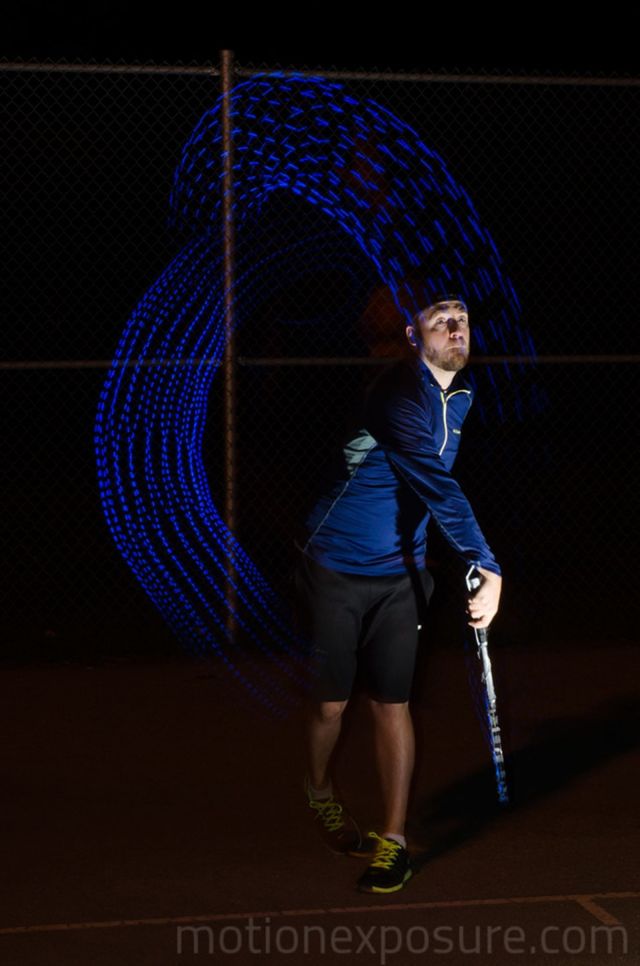
His website galleries are full of multi-colored studies of outdoor sports like kayaking, swimming and even bike polo. He also has a gallery of the leg and arm motions of karate katas.
Orlando has studied the light painting of fellow Canadian photographer Patrick Rochen as well as long exposure studies done by an MIT photographer in the 1930s and ’40s.
“The idea for these photos was the combination of my three interests, aerodynamics, the outdoors and photography,” he said. “I never go on a canoe trip without my Pelican case and camera.
On occasion, Orlando is the kayaker of swimmer in his photos but he is otherwise behind the camera. He also points out that the trails of light are created in camera by the subject and not from any post production work.
“I have a list of motions and activities that I would like to capture next,” he said. ” It’s now winter sports season where I live so the next series will be winter themed.”
